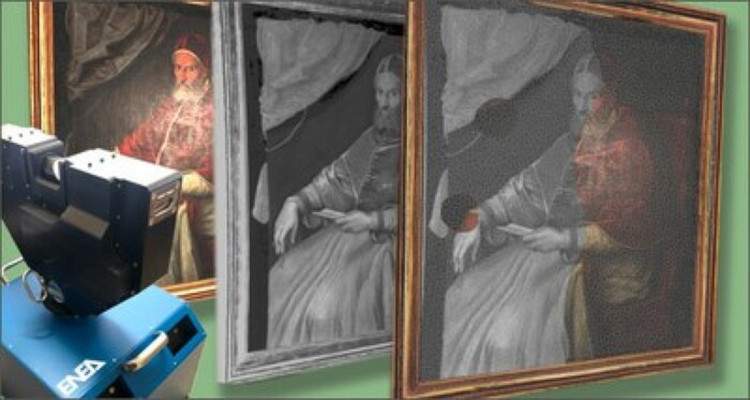The latest-generation laser scanner created by ENEA researchers for the protection and dissemination of knowledge of the artistic-cultural heritage, and designed as part of the E-RIHS project, was presented at the 27th International Restoration Exhibition in Ferrara.
Diapason, as the latest-generation laser is called, makes it possible to create a multispectral 3D model of the work being investigated, thanks to the laser scanner’s seven wavelengths, from ultraviolet to early infrared, which allow it to acquire images that are not altered by ambient light, overcoming the limitations of devices on the market today. These features make it a suitable tool for more easily assessing the health of paintings, frescoes, sculptures and archaeological sites.
“Its compact size makes it possible to reduce the costs of measurement campaigns while avoiding difficulties related to portability and accessibility at some sites,” explains Massimiliano Guarneri, the ENEA Diagnostics and Metrology Laboratory researcher who worked on the prototype. “The same post-production phase of the acquired images, and thus the study and monitoring of the works, will be simplified by the regularity and ’cleanliness’ of the generated dataset.”
The device is capable of operating up to a distance of 15 meters and combines the performance of two prototypes already in use at ENEA, namely the one with three wavelengths in the visible and the one with an infrared laser, the latter capable of going under the first layer of pigment, making visible, for example in oil canvases, afterthoughts, preparatory studies and previous restoration work.
“Diapason, much like the metal fork that emits standard notes on which to tune musical instruments, combines information from different wavelengths into a 3-D model,” Guarneri continues, “that encapsulates specifics previously accessible not only with different tools but also with lengthy and complex editing. In the past we have worked on the digitization of several important works of art through the combined use of infrared laser and 3D color laser scanner, but managing various logistical complications, since we had to use different tools, and with more onerous post-production work.”
This technique was used to analyze theSelf-Portrait and La Primavera by seventeenth-century painter Mario De Fiori, kept at the Chigi Palace in Ariccia, and the Portrait of Pope Gregory XIII, a sixteenth-century work by painter Scipione Pulzone, a work currently kept at the Salesian Villa Sora Institute in Frascati. In this case, the 3D model obtained highlighted some details, such as the handkerchief clutched in the pontiff’s right hand or part of the drapery depicted in the upper right corner, currently no longer easily visible to the naked eye due to the darkening that the painting has undergone over time.
“From today, thanks to Diapason, it will be possible to reach these results through simpler, faster and less expensive operations,” the researcher concluded.
 |
| Introduced Diapason, state-of-the-art laser scanner to assess the health of works |
Warning: the translation into English of the original Italian article was created using automatic tools. We undertake to review all articles, but we do not guarantee the total absence of inaccuracies in the translation due to the program. You can find the original by clicking on the ITA button. If you find any mistake,please contact us.